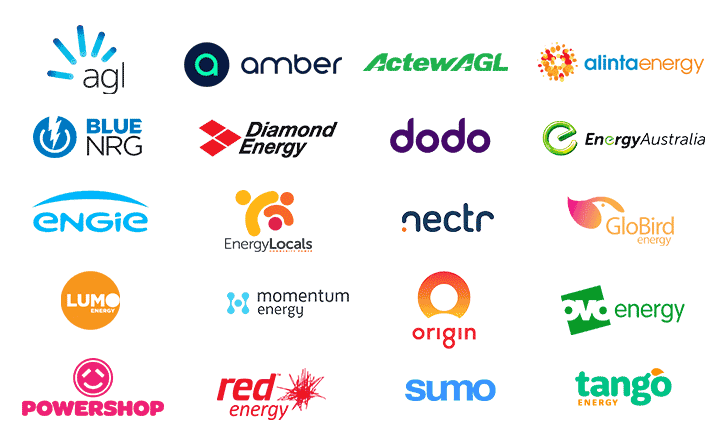There’s been lots of hype surrounding market-linked electricity plans from retailers like Amber (and, to a lesser degree, the defunct Powerclub). Some customers posted images of negative prices, boasting they were getting paid to charge their car or run the dishwasher. I was curious, but the periods of very low or very high prices seemed to be fleeting. Could these market offers provide sufficient low and high priced hours in a day/week/month/year to save or make money? Here’s my personal experience and experiment with market-linked energy plans.
Market-linked electricity plans unpacked
So what’s a market-linked electricity plan, and why would someone buy energy this way? Market-linked energy plans give customers access to prices much closer to the wholesale electricity rate that fluctuates over the day. During the middle of a typical day, electricity could cost as little as a few cents/kWh. In contrast, evenings might see prices approaching a dollar/kWh or more. The aim is to use energy when it’s cheapest and avoid buying when prices spike (or export back into the grid). An app keeps customers informed throughout the day about the current price.
I wanted to understand if a market-linked energy plan could provide more significant energy savings for flexible and motivated households. And to explore the best way to make it work. I’ll cover the pros and cons of market-linked plans as we go.
The next step
I’m always looking to see where the next big thing may be. It’s about finding a plan that provides an excellent monthly credit for exports from our solar and battery setup. In the past, the plans that provided the biggest credits were due to overly generous retailers not capping or limiting their feed-in tariffs (FITs). But if I and other consumers profit and the retailer makes losses, that’s not a sustainable plan. So, it’s not surprising high FIT plans are not what they used to be.
Instead, I wanted to find a plan offering a better relationship between customer and retailer, where both could benefit. A plan that reflects the actual situation in Australia’s energy market. There is an oversupply of electricity in the middle of the day due to high solar generation and the inability of coal-fired power stations to shut off. So when solar households export excess electricity, it’s barely worth anything to anybody. However, it’s a very different story when the sun stops shining and evening energy prices are surging. In this situation, if you have a battery, you can expect a handsome return to feed your excess solar back into a grid. The 2022 energy shock has turbo-charged this – with peak prices spiking even further due to rising coal prices.
The experiment with choosing a market-linked electricity plan was to see how valuable excess solar could be if exported when most needed.
Why I chose Amber?
I selected Amber’s market-linked electricity plan because it supported;
- No PV size limits
- No PV export caps/limits
- Exposure to market prices. This means access to the lowest and highest rates for imports/exports.
- Access to platform/solutions that enable the automation of importing and exporting power to maximise returns based on changing market rates
- Willingness on our part to invest the time to make it work with our home (solar, battery. EV charging)
Real-world results
Because every household chooses when they buy energy and when they export (if they have a battery); the experience and results will vary widely. Here’s what our household achieved over nine months as an Amber customer – being savvy about when we bought power and exported.
"Our average feed-in tariff for the 9 months was a whopping 34c per kWh."
| Month | Avg Usage Rate | Avg Feed-in Tariff | Difference | Bill Credit |
|---|---|---|---|---|
| Nov 2021 | 16c | 11c | 5c | -$65.29 |
| Dec 2021 | 6c | 10c | -4c | -$90.97 |
| Jan 2022 | 11c | 10c | 0c | -$81.13 |
| Feb 2022 | 11c | 15c | -3c | -$64.5 |
| Mar 2022 | 13c | 17c | -3c | -$9.08 |
| Apr 2022 | 18c | 29c | -12c | -$95.84 |
| May 2022 | 22c | 82c | -61c | -$492.45 |
| Jun 2022 | 29c | 85c | -55c | -$440.98 |
| Jul 2022 | 29c | 65c | -36c | -$295.99 |
| Aug 2022 | 14c | 33c | -19c | -$191.66 |
| Total (Nov 21-Aug 22) | -$1,827.89 |
The table shows very clearly the change from November 2021 when our average feed-in tariff was 5 cents below the usage rates we paid to buy from the grid, through to May and June 2022 when the feed-in tariffs were 50c per kWh more than what we paid to import energy from the grid. Clearly these were extraordinary times with unprecedented evening prices. However this started a trend which continues today – significant differences in daytime and evening prices across NSW, QLD, SA and Victoria. The ongoing high margins between low and high prices each day are key to achieving exceptional returns from storage (and solar) through arbitrage.
In part 2 of this series we’ll share how we have been able to push monthly bill credits to be consistently $400-$600 per month from August to October 2022 even as wholesale rates have fallen from their peaks in winter. A unique bonus network FIT available in our local area (Ausgrid) played a big part since August 2022 in increasing our returns.
Who does a market-linked plan work well for
Engaged battery owners are the households that stand to benefit most from market-linked electricity plans. So, if you are a motivated solar owner looking to add a battery, consider market-linked plans to maximise your ROI. Battery storage enables households to make the most of low prices on market-linked plans, filling the battery if their solar doesn’t. And, importantly, having the opportunity to export when prices spike or equally to use stored energy when grid rates surge.
Households without a battery will have reduced options to capitalise on cheap energy or to avoid the inevitable price surges. If evening rates hit $5 per kWh, do you go out for takeaway rather than cook at home? This isn’t going to work for lots of households.
Pros and cons
Battery essential
Amber has become increasingly vocal about needing a battery in your household on their market-linked plan. A battery is essential to make Amber work so you can avoid the high evening price spikes and negative feed-in tariffs on some days. I can’t imagine many scenarios where being an Amber customer without a battery would reliably offer savings over a normal market offer.
Maximum price guarantee
Amber does provide a cap on pricing, guaranteeing that overall, customers will pay no more than the reference price across a year along with a minimum feed-in tariff. The price for energy includes a small premium for this insurance. Sure, this is a safety net, but you want to choose a plan where you are doing better than the reference price, especially when more effort is involved.
Go Automatic
Automation solutions such as Amber’s SmartShift, ned and Charge HQ can help reduce the effort around market-linked plans. These platforms can automate buying grid energy for or discharging energy from your battery, home charging your EV at the right price point and more. All significantly reduce the need to keep checking the pricing app, because much of your homes energy import and export happens at the optimal time.
Opportunities for Amber to improve
There are a couple of areas where I think Amber could improve their market-linked plan.
The first is moving to 5 minute meter data. At present, meter data is processed by Amber on 30-minute intervals. So, the peak price, which fluctuates every 5 minutes, is averaged across the whole 30 minutes of the customer’s energy consumption or export. Moving to use 5 minute customer meter data would soften the impact of market price spikes, as they are typically concentrated in 5-minute intervals and soften either side. For those exporting into peak prices you only need to export for the 5 minute blocks when prices are high not the whole 30 minutes to make sure you get maximum exports of the 30 minute average price. And if the high price comes at the end of the 30 minute period, then you’ll only get a fraction of the value if you’re only exporting for 5 minutes of the 30 minute period.
The second thing that Amber could do is to help customer to optimise their tariff type. No other retailer in the country is doing this that we are aware of. However, it would be consistent with Amber’s approach of not profiting from customers’ energy use and simply charging a monthly access fee for the service. The retailer could assist households in determining if switching their tariff type, to say a demand tariff, could save money based on previous usage and export patterns.



